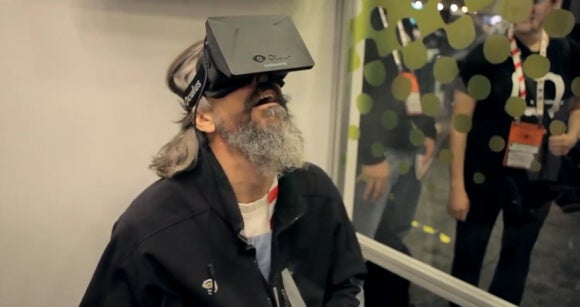Oculus Rift Virtual Reality Headset Gets $75M Investment: Coming To ‘Consumers Everywhere’
Virtual reality, long a dream of gamers and science fiction buffs, has moved much closer to reality since Oculus burst onto the scene earlier this year. The company got a significant vote of confidence recently, in the form of a $75-million investment round led by one of Silicon Valley’s most highly regarded venture capital firms, Andreessen Horowitz.

Share
Virtual reality, long a dream of gamers and science fiction buffs, has moved much closer to reality since Oculus burst onto the scene earlier this year. The company got a significant vote of confidence recently, in the form of a $75-million investment round led by one of Silicon Valley’s most highly regarded venture capital firms, Andreessen Horowitz.
The company’s previous round of funding came from smaller, less prestigious investment houses.
The Andreessen Horowitz investment represents a big bet that virtual reality will become not just a novelty, but also a tool for further advances in other areas, including — gasp! — the humanities.
Oculus VR’s CEO Brendan Iribe said in a statement that the money will “help us take the final steps toward our ultimate goal: making virtual reality something consumers everywhere can enjoy.”
Marc Andreessen, who created the first web browser before founding the investment firm that bears his name, was even more explicit about the expanding use cases he sees for virtual reality.
“I first worked in 3D interactivity and virtual reality over twenty years ago at the University of Illinois. Oculus delivers on the potential of VR that we saw but couldn’t realize at the time. We believe Oculus will not only alter the gaming landscape but will redefine fundamental human experiences in areas like film, education, architecture, and design,” Andreessen said.
Venture firms bet on companies, such as Facebook and Airbnb (both in Andreessen Horowitz’s portfolio), that will grow huge user bases, so it makes sense to see Andreessen looking far down the road. Other experts have told Singularity Hub that medicine and machine repairs will also likely be important fields for virtual reality headsets.
But Oculus VR, by its own account, has work to do before its Rift headset can even dominate the gaming space. The display resolution is not sharp enough to let the user lose him- or herself in the experience, for instance. The goggles' response to user’s movements is also limited to head movements and still has a noticeable lag time. And, like any other new hardware, the headset will need compelling software.
Be Part of the Future
Sign up to receive top stories about groundbreaking technologies and visionary thinkers from SingularityHub.


Those problems appear to be at the top of Oculus's to-do list. The company said it will be “investing heavily in future R&D” and “designing and publishing more incredible VR content.”
It will also build more widgets.
So far only developers can get the goggles, but some 40,000 have — about as many who reportedly have Google Glass. Still, the company and its backers are aiming for mass-market success.
The demand seems to be there. Oculus raised $2.5 million in a recent Kickstarter campaign. And other VR glasses have also hooked thousands of advance buyers on the crowdfunding site.
Photos courtesy Oculus VR
Cameron received degrees in Comparative Literature from Princeton and Cornell universities. He has worked at Mother Jones, SFGate and IDG News Service and been published in California Lawyer and SF Weekly. He lives, predictably, in SF.
Related Articles

This Light-Powered AI Chip Is 100x Faster Than a Top Nvidia GPU

How Scientists Are Growing Computers From Human Brain Cells—and Why They Want to Keep Doing It

These Brain Implants Are Smaller Than Cells and Can Be Injected Into Veins
What we’re reading



